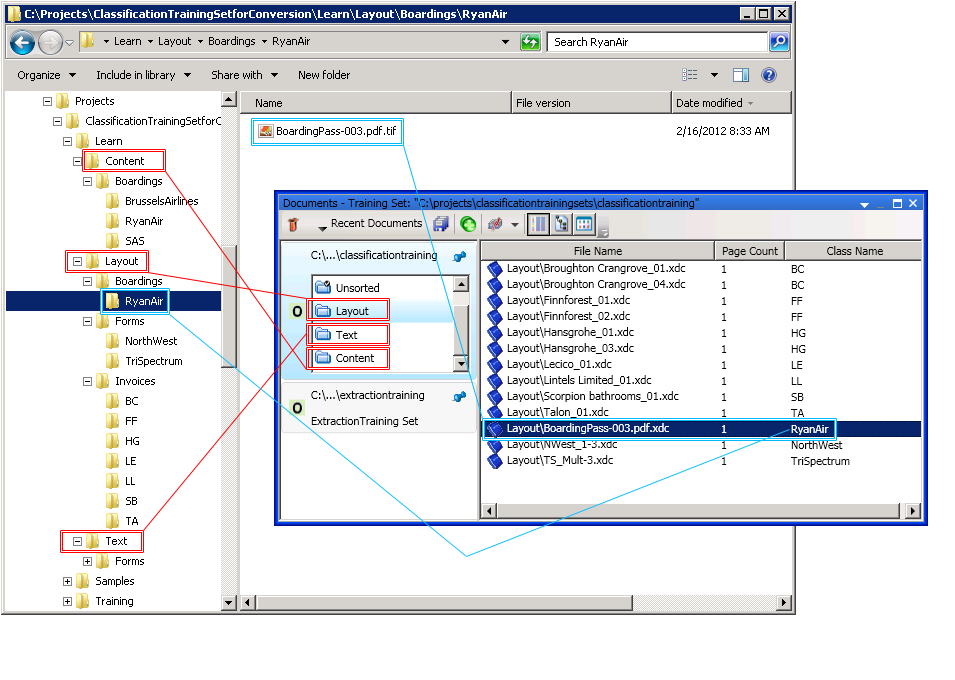Classification Training Set conversion
The converted Classification Set no longer separates each view into its own folder. Instead, a document subset is created for each class and the old hierarchy is removed. In the old training hierarchy, if a separate folder for each view and class per view is present, they are merged into a single document subset in the new document set format. Each different view that has one or more training documents is converted into its own document subset with the same name. This means that if your project has both content and layout classification and each of these classification types has training documents, a document subset is created for each view when the project is converted.
